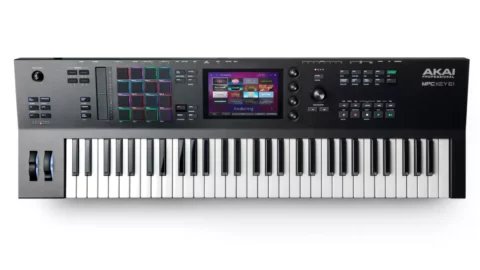Akai Pro MPC Key 61 , the workstation keyboard of the future
Finally, Akai Pro has revealed the standalone MPC Key 61 synth keyboard.
You still get the pads, but now there are five octaves of keys, included as well.
Lately leaked, the instrument features 61-key velocity and aftertouch semi-weighted keyboard, 25 Plugin instruments, Fabric XL power synth – which is powered by a sample-based engine. And there’s also the OPx4 4-operator FM synth, and Stage Piano, Session Strings, Stage EP and Organ instruments.
Whereas, the plugin instruments cover everything from acoustic sounds to futuristic synths – making the keyboard suitable for a wide variety of music producers.
Other features include high-end mic preamps with phantom power to handle input signals, assignable touch strip controller and Q-Link knobs – giving you plenty of ways to sculpt your sounds, 16 RGB pads, transport controls – a seven-inch multi-gesture colour display and effects from AIR Music Tech.
MPC Key 61 can also be use as a standalone, you get a 128-track MIDI sequencer and eight audio tracks for recording – but there is also scope to plug in class-compliant audio interfaces MIDI controllers via USB. Eight CV/Gate output jacks enable easy modular integration, as well. The MPC2 desktop software, which runs on PC and Mac, is also included.
The MPC Key 61 is available from today priced at $1,499/£1,699.
Find out more on the Akai Pro website.



